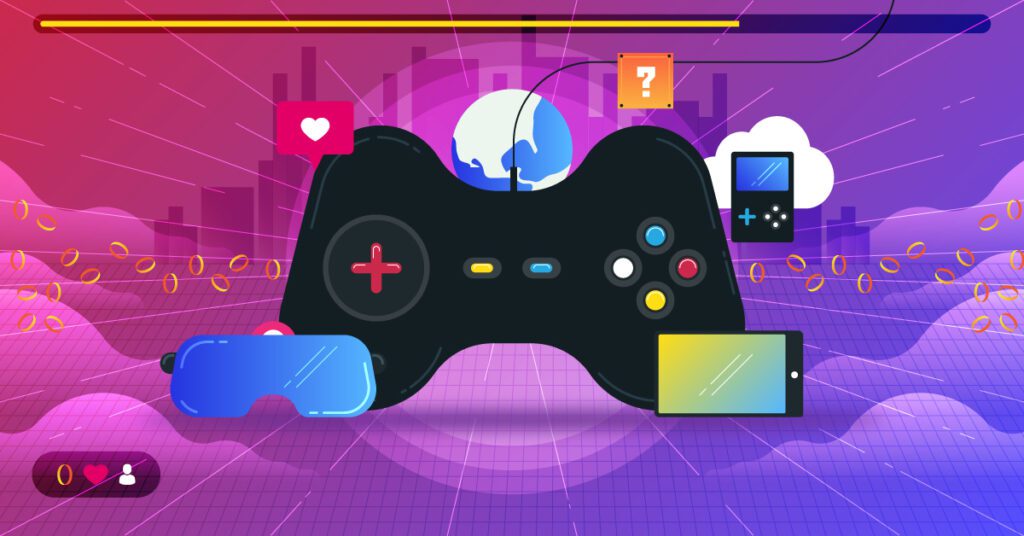Game development is an ever-evolving field that requires constant adaptation to new technologies and tools, and emerging technologies are set to shape the future of game development. Advances in artificial intelligence (AI) means AI is now used to enhance different areas of a game, including creating more lifelike and dynamic environments and improving game storytelling. The emergence of virtual and augmented reality (VR/AR) headsets is creating a more immersive game experience, allowing players to interact with virtual objects and environments. Cloud computing is a more viable option for game development and enables cross-platform games, while machine learning adds dynamic and adaptive game experiences, including procedurally generated content.
The Future of Game Development: Emerging Technologies and Tools
Introduction
Game development is a constantly evolving field. As technology advances and new tools are introduced, game developers must stay up-to-date and adapt their processes in order to create engaging and innovative games. In this article, we will be discussing some of the emerging technologies and tools that will shape the future of game development.
Artificial Intelligence
Artificial Intelligence (AI) has been a buzz word in the game development industry for quite some time now. In the past, AI was used primarily for game character movement and pathfinding. However, with advancements in AI technology, game developers can now use AI to enhance a number of different game aspects.
One area where AI can help is in creating more lifelike and dynamic game environments. Game developers can use AI algorithms to generate terrain and landscapes, as well as populate them with creatures and characters that behave realistically. AI can also help improve game storytelling by creating more engaging and responsive non-player characters (NPCs).
Virtual and Augmented Reality
Virtual Reality (VR) and Augmented Reality (AR) are two technologies that are quickly becoming more accessible to consumers. The emergence of VR and AR headsets has opened up a new realm of possibilities for game developers. VR and AR can be used in a number of different ways, including creating a more immersive game experience, allowing players to interact with virtual objects and environments, and even creating real-world games that blur the line between the physical and virtual world.
One interesting use of AR in game development is the creation of location-based games. These games use a player’s smartphone or tablet to create an augmented reality experience that is tied to the player’s real-world location. This creates a unique and engaging game experience that can only be played in certain locations.
Cloud Computing
Cloud Computing has been around for a number of years, but it is only more recently that it has become a more viable option for game development. With cloud computing, game developers can offload some of the processing power required for their games onto remote cloud servers. This can be particularly useful for creating more complex games that require a lot of processing power or for games that have a large number of players.
Another advantage of cloud computing is that it can allow game developers to create cross-platform games more easily. With all the game data stored remotely in the cloud, players can access their saved games and progress from any platform with an internet connection.
Machine Learning
Machine Learning is a subset of AI, and it is particularly useful for creating more dynamic and adaptive game experiences. Machine Learning allows game developers to create games that can learn from player behavior and adjust the game accordingly. This can lead to more challenging and engaging games that adapt to the player’s skill level.
One application of Machine Learning in game development is the creation of procedurally generated content. Procedural generation is the use of algorithms to generate game content such as levels, characters, and items. With Machine Learning, game developers can create algorithms that learn from player behavior and generate content that is tailored to the player’s preferences.
Conclusion
In conclusion, game development is an ever-evolving field that requires constant adaptation to new technologies and tools. With advancements in AI, VR/AR, cloud computing, and Machine Learning, game developers have a wealth of new tools at their disposal. These technologies are not only improving the quality of games but also widening the range of possibilities for the gaming industry. As technology continues to advance, it will be exciting to see how game developers will use these emerging technologies to create even more innovative and engaging games.
